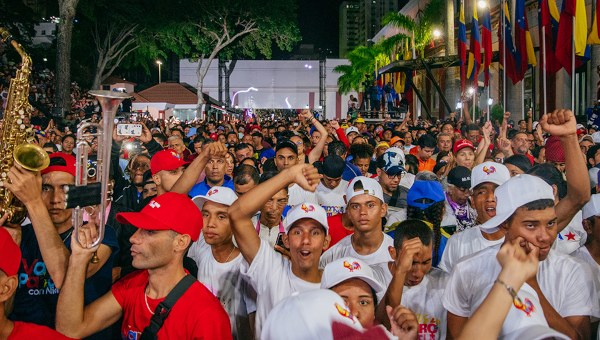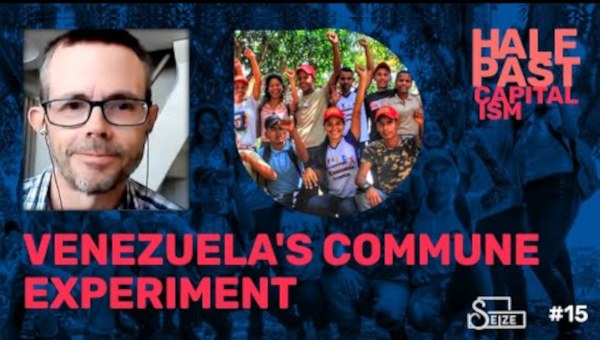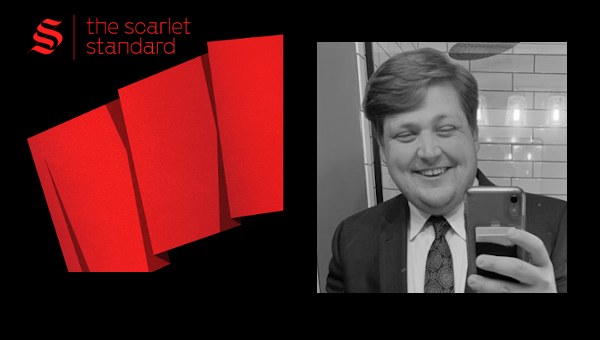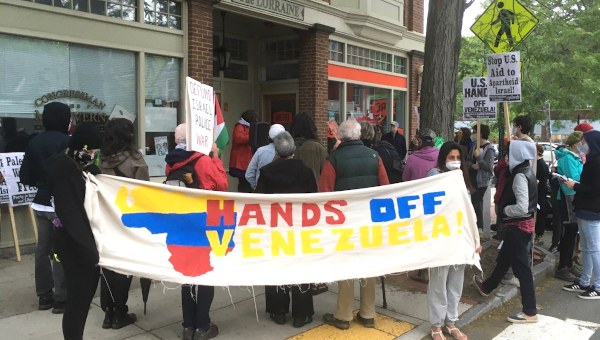The Venezuelan opposition and much of the media use the term “peaceful protests” to distinguish gatherings of protesting students and other young people from the more violent actions including vandalism and shootings carried out by those outside of the university community. “Peaceful protests,” however, is a loaded term that serves to plant doubts about the intentions of the Chavista government. In the first place, the actions of the police and National Guard are portrayed as a violation of the constitutional right to peacefully demonstrate at the same time that the government is blamed for failing to get the “violent” protests under control. In the process, Venezuela is depicted as virtually a failed state or, as opposition leader Leopoldo López put it in the title of his March 25 New York Times op-ed article, “a failing state.” Another outlandish assertion that makes its way into the media is that the “violent” protesters are actually Chavista infiltrators intent on discrediting the opposition. Consequently the violence has absolutely nothing to do with the peaceful protests and the opposition in general.
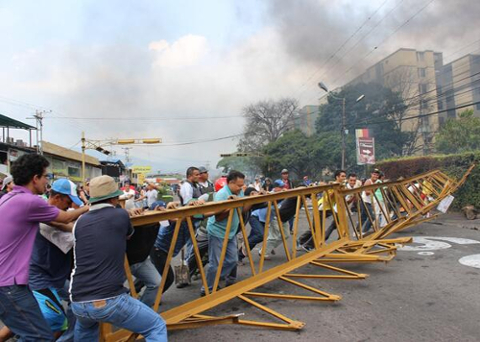
The Chavista discourse sometimes plays into this deceptive line of reasoning in an attempt to isolate the radical fringe of the opposition. In appealing to the mainstream opposition group the Mesa de la Unidad Democrática (MUD) to join the government-sponsored “Peace Dialogue,” President Nicolás Maduro and other Chavista leaders sometimes reinforce the
distinction between the “peaceful” and “violent” protesters.
Protests Range from Nuisance to Fatalities
However the term “peaceful protests” is misleading if not deceptive. In the first place, nearly all of the thousands of opposition protests that have taken place over the last six weeks in Venezuela have been illegal and would not be tolerated in any democratic nation throughout the world. At best, the “peaceful protests” consist of blocking traffic lanes of major avenues, resulting in vehicle backups for miles often forcing thousands of people to lose an hour or more of their time. In addition, the “peaceful protests” sometimes include barricades, fires, and the dispersing of oil on lanes used by motorcyclists. In this sense the distinction between the “peaceful protests” and the violent ones is blurry.
In another blurring of differences, the opposition’s slogan “No More Deaths” leaves the impression that peaceful protesters have been the main victims of the violence, thus glossing over the fact that among the 36 fatalities, 6 are members of security forces, others are Chavistas, others are innocent bystanders, some are peaceful protesters and others are violent ones. Of course all 36 deaths are equally tragic, but the opposition discourse plays down the fact that many of the wounded and dead were engaging in violence. One report provided by the radio station Alba Ciudad 96.3 FM stated “We can observe that much of the international media, in their eagerness
to discredit the Venezuelan government and label it murderous, assure that all of the dead are students or members of the opposition assassinated by government security forces, a claim we have proven to be completely false.” The report went on to claim that only five of the deaths were at the hands of security forces. See: “Conozca los 35 fallecidos por las protestas violentas opositoras en Venezuela.”
The defense of the “rights” of the peaceful demonstrators include statements by human rights advocates that in a democracy civil disobedience is perfectly legitimate and protesters have the right to take to the streets. However, in the first place, a distinction needs to be made between disruption for disruption sake and marches of protesters who use streets rather than sidewalks due to the large number of participants. In the second place, the objective of responsible civil disobedience is to make a statement, not to cause disruptions. I have observed acts of civil disobedience in the United States, one involving the Reverend Jesse Jackson at Yale University in New Haven in which the protesters were quickly rounded up and hauled off to jail. In another rally that I witnessed at Yale, protesters against Apartheid in the 1980s had previously reached an agreement with the municipal authorities and accepted that they would be jailed and fined for their actions. There was actually no “bad feelings” between the city authorities and the protesters and the details were planned ahead of time to minimize public inconvenience. This is a far cry from what is happening in Venezuela. In many if not most cases, the number of protesters do not exceed 50 people. The question can thus be asked: Why don’t they use the sidewalks?
There is another area of convergence between the peaceful and violent protesters which is a further justification for prosecuting both. Although the opposition sometimes denies this, or tries to play it down, the protesters of both groups are calling for regime change as embodied in their main slogan “la salida” (“exit”). Some opposition leaders spuriously claim that they are merely demanding the “resignation” of President Maduro and that change of government can be accomplished within the framework of the constitution. Jailed opposition leader Leopoldo López, for instance, in his recent New York Times article, stated “a change in leadership can be accomplished entirely within a constitutional and legal framework.” These statements are deceptive. If Maduro were to resign, National Assembly president Diosdado Cabello would assume the presidency, a sequence which would not at all be to the liking of the opposition. This claim to legality is a replica of the April 11, 2002 coup when the opposition asserted that President Chávez had resigned and Pedro Carmona was merely “filling a vacuum” and thus acting in a democratic fashion. Not only was the allegation of Chávez’s resignation a blatant lie, but the procedure that followed was in complete violation of the constitution. Indeed, Carmona ended up decreeing the virtual abolition of the constitution itself.
The opposition and much of the national and international media claim that the “peaceful protesters” are demonstrating against concrete problems such as insecurity, scarcities and inflation. But the protesters have failed to put forward any specific proposals to correct these problems. Their sole aim at this point is regime change, as leaders such as María Corina Machado and López himself have explicitly stated on occasion. This is not to deny that opposition leaders have a hidden agenda of specific changes which they intend to implement once in power.
Regime Change By Any Means Except Elections
The demand for regime change on the part of both the “peaceful” and violent protesters would not be tolerated in any democratic nation in the world, beginning with the United States. The accusation, for instance, that the Communist Party U.S.A. advocated “the overthrow of the government” was the justification for jailing hundreds of party members during the McCarthy period in the 1950s. The assertion, however, was misleading since the Communists were not calling, or making preparations, for the overthrow of the government but only felt that it would inevitably someday occur. Nevertheless, Communist leaders felt the full weight of the law at the time. More recently, the FBI monitored the “Occupy Houston” movement on grounds that some protesters allegedly advocated “the overthrow of the government,” as has been revealed by transparency advocate Ryan Shapiro. Advocacy of regime change in non-democratic countries is even more perilous as shown by the recent death sentences handed down by the heavily U.S.-supported Egyptian government to 529 members of the Muslim Brotherhood.
In short, the rhetoric divide between peaceful and violent protests have served the interests of the opposition. Thus, for instance, opposition governors and mayors take advantage of this distinction in order to cover up their failure to check disruptive activity in their jurisdiction. The media, for its part, uses the binary construct in articles on the alleged excesses of security forces, such as the ones recently published in El Tiempo of Puerto La Cruz on March 25 headlined “National Guard Represses Peaceful Protests” and a similar one published in Ultimas Noticias on March 5. Not once in the forty years before Chávez’s advent to power in 1998, did the commercial media use such phraseology. •


